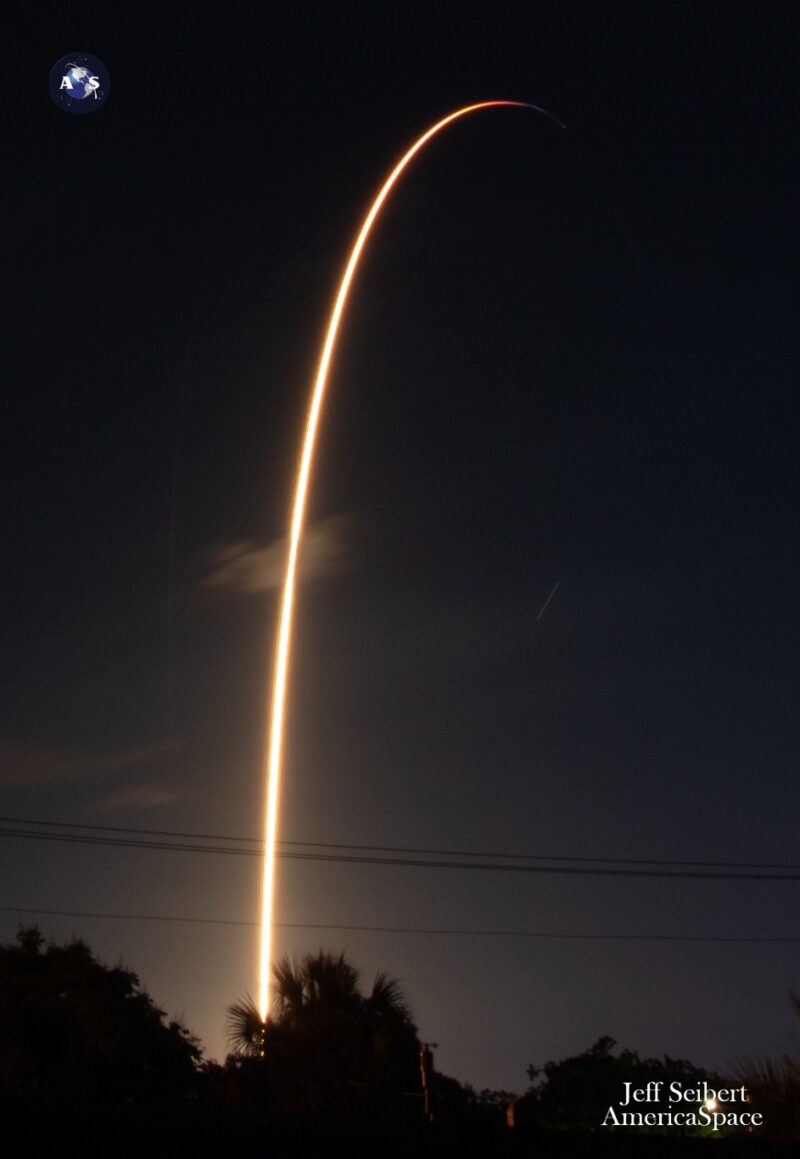
SpaceX flew its 59th Falcon-class mission of the year, its record-tying eighth launch of August and its 250th overall successful Falcon 9 of all time late Saturday, when a three-times-used booster sprang perfectly from storied Space Launch Complex (SLC)-40 at Cape Canaveral Space Force Station, Fla., right on time at 9:05 p.m. EDT. Veteran B1080—which entered service back in May to launch the four-person Ax-2 crew to the International Space Station (ISS), then lofted Europe’s Euclid deep-space observatory in July—delivered a batch of 22 Starlink internet communications satellites into orbit, before returning to a smooth offshore touchdown on the Autonomous Spaceport Drone Ship (ASDS).
With last night’s success, SpaceX enters the closing days of August already on eight launches, repeating a record-breaking monthly cadence first achieved in 2023 and duplicated three times previously in March, May and July. One—or perhaps even two—more flights are targeting end-of-month missions from the Cape and Vandenberg Space Force Base, Calif., which might yet tip August into the record books with as many as ten missions.
August has so far seen six flights deliver a total of 122 Starlinks and another pair lift the heavyweight Galaxy-37 geostationary communications satellite for Intelsat and yesterday’s pre-dawn rise of Dragon Endurance and her Crew-7 quartet of Commander Jasmin Moghbeli, Pilot Andreas Mogensen and Mission Specialists Satoshi Furukawa and Konstantin Borisov for their six-month Expedition 69/70 increment aboard the space station. Up next, possibly as soon as Thursday 31st, the second set of Transport and Tracking Layer (TTL) satellites for the Space Development Agency (SDA) may fly from Vandenberg plus one more flight may be squeezed in for SLC-40, with August’s record-breaking seventh Starlink haul.
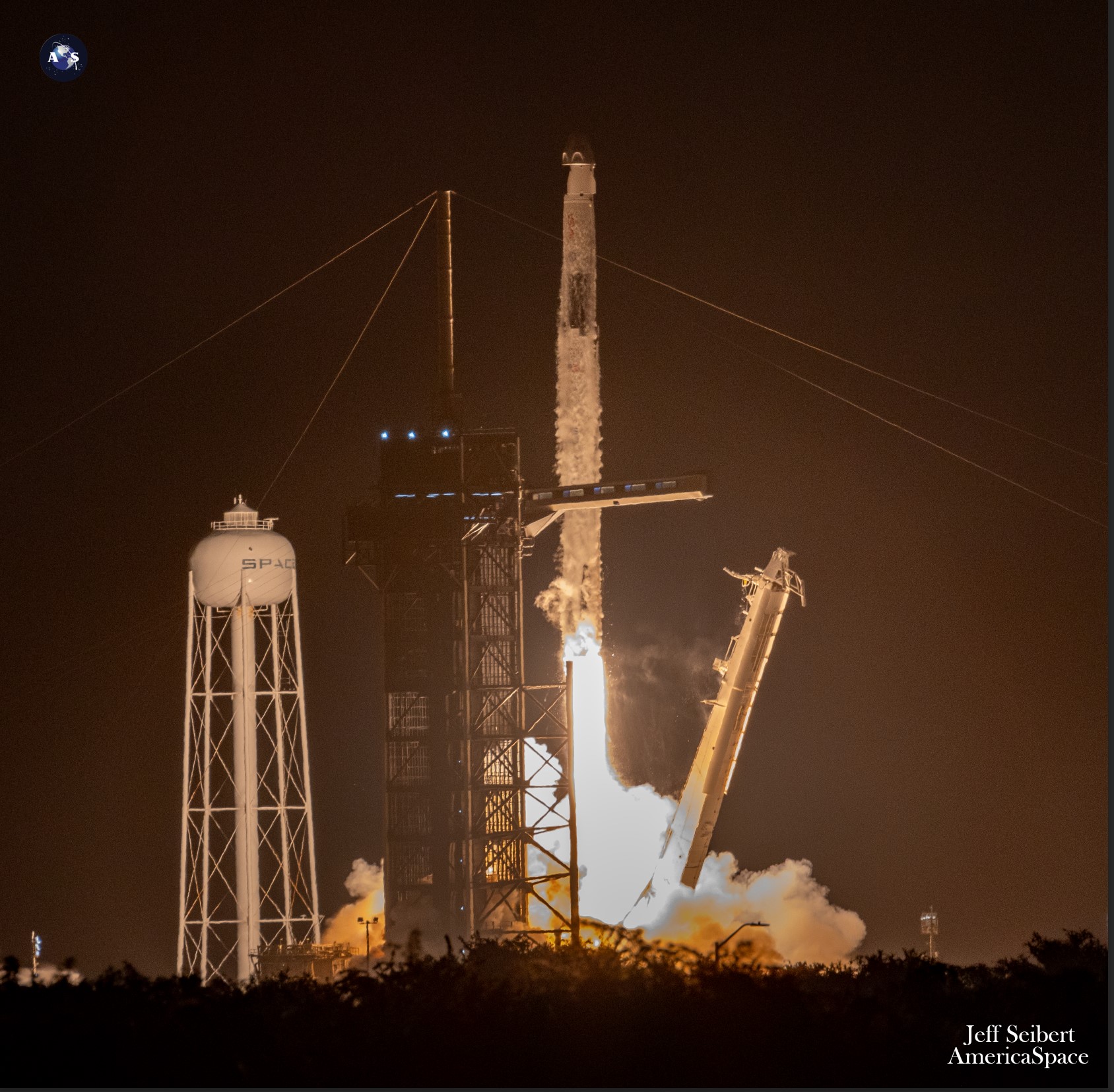
Last night’s launch came right on the opening of a 119-minute “window”, with four discrete T-0 points falling between 9:05 p.m. EDT and 11:04 p.m. EDT. Weather was predicted to be around 95-percent-favorable. “Unseasonably dry conditions will persist through the launch window,” noted the 45th Weather Squadron in a Friday update.
“With little moisture to tap into, northeasterly flow will bring only very isolated low-topped showers over the Space Coast,” it was added. All told, that was expected to induce only a slight possibility of a violation of the Cumulus Cloud Rule.
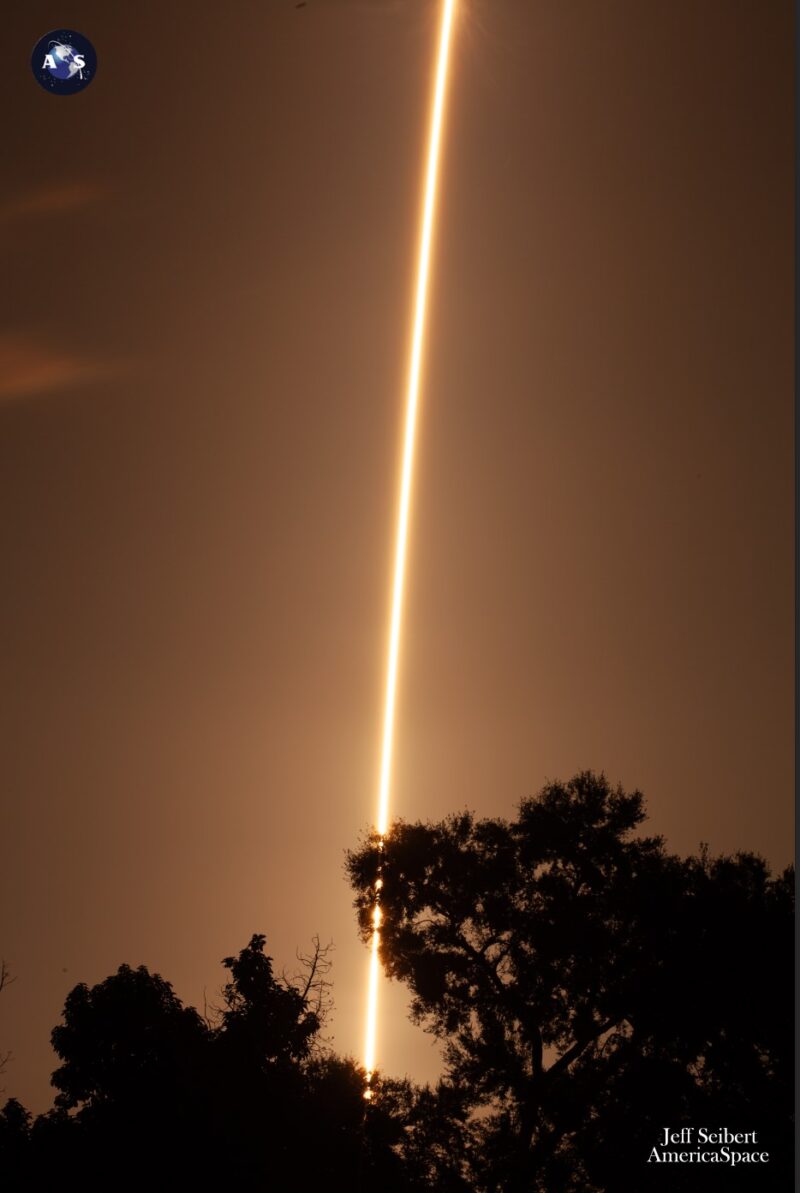
Without further ado, B1081 roared uphill right on the first launch opportunity, her nine Merlin 1D+ engines burning hot and hard for the opening 2.5 minutes of the flight. The seasoned core then separated from the stack and executed Entry and Landing Burns to alight with pinpoint grace on the expansive deck of the ASDS, “Just Read the Instructions”, which put to sea out of Port Canaveral last week.
The single Merlin 1D+ Vacuum engine of the Falcon 9’s second stage then ignited for a customary six-minute “burn” to deliver the 22 Starlink “V2 Mini” satellites into orbit, pushing to 1,339 the total number of these flat-packed internet communications satellites launched on 34 Falcon 9 missions so far in 2023. And with last night’s flight, SpaceX has finally pushed through 5,000—5,003, to be exact—the overall amount of Starlinks launched either as “rideshares” or on 101 dedicated missions since May 2019.
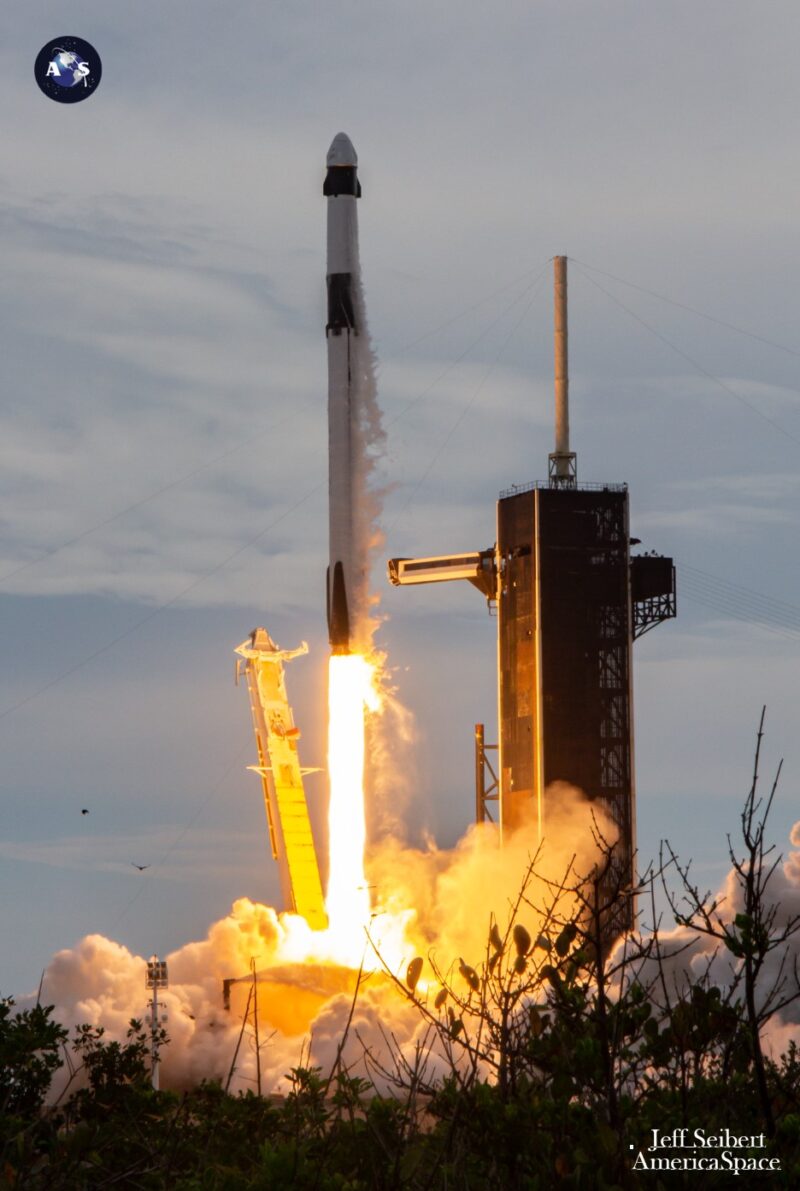
It also pushes the Hawthorne, Calif.-headquartered organization ever closer to eclipsing early next month the 61-mission annual record for launches, set at the end of December 2022. With 59 flights—including a record-setting cadence of three Falcon Heavies—since January, SpaceX has averaged a mission every 4.0 days, a substantial uptick on last year’s achievement of one flight each 5.9 days. And that makes it increasingly more likely that SpaceX will draw close to attaining its vaunted goal of a hundred launches by the time the New Year’s Eve bell tolls.
As a network, Starlink facilitates high-speed and low-latency internet provision to over 60 sovereign nations and international markets in North and South America, Europe, Asia, Oceania and Africa. Last month alone, Cyprus, Guatemala, Kenya, Malaysia and Malawi have signed up to the network and the Bahamas came online earlier in August.
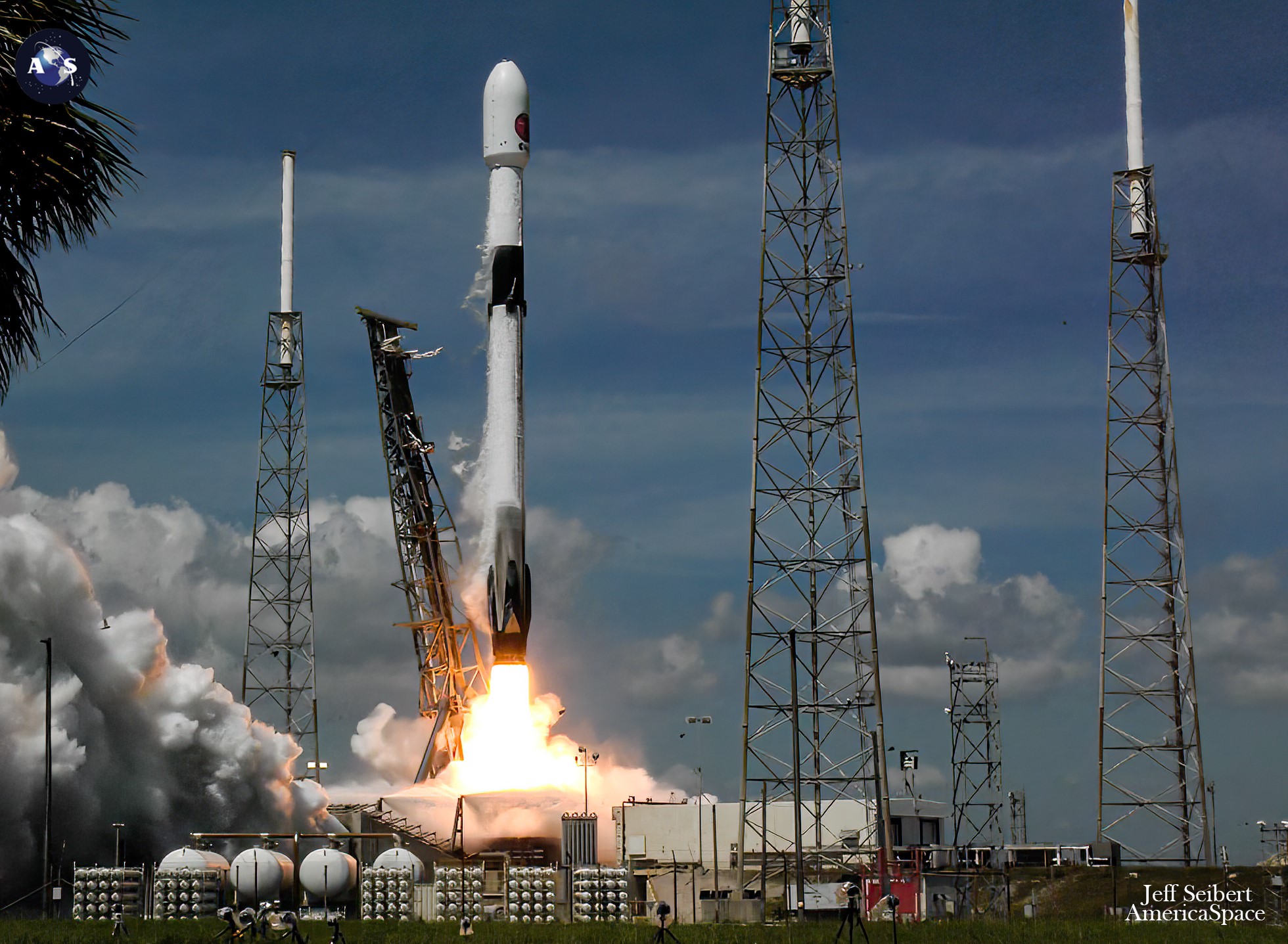
Florida-based intercity operator Brightline adopted Starlink on its trains earlier in 2023, the first passenger rail service in the world to do so. Additionally, El Salvador’s Ministry of Education has begun integrating Starlink capability into its schools to help close the digital divide between urban and remote rural communities and 50 Rwandan schools are now connected via Starlink’s high-speed internet service.




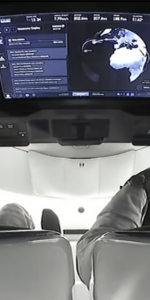
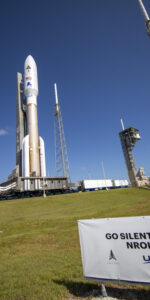
7 Comments
7 Pings & Trackbacks
Pingback:SpaceX Launches Year’s 40th Starlink Mission, 400th Miniaturized Satellite, Atop Record-Setting Falcon 9 - AmericaSpace
Pingback:SpaceX Launches Year’s 40th Starlink Mission, 400th Miniaturized Satellite, Atop Record-Setting Falcon 9 - SPACERFIT
Pingback:Weather Looks Iffy for Tonight’s Month-End Falcon 9 Launch - SPACERFIT
Pingback:Veteran Falcon 9 Wraps Up Busy September, As Falcon Heavy Readies for Psyche Mission Static Fire Test - AmericaSpace
Pingback:Veteran Falcon 9 Wraps Up Busy September, As Falcon Heavy Readies for Psyche Mission Static Fire Test - SPACERFIT
Pingback:SpaceX Looks to Saturday Falcon 9 Double-Header - AmericaSpace
Pingback:Ax-3 Crew Prepares for Ambitious Space Station Mission - AmericaSpace